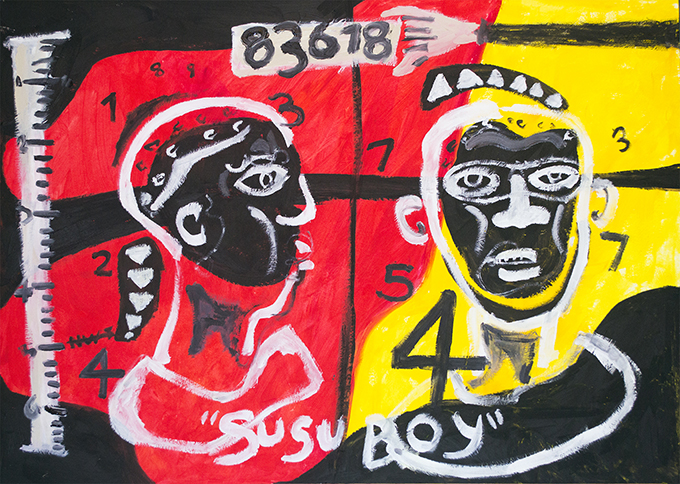
In the first of a series of guest blogs for the [Re:]Entanglements project, the artist and designer Chiadikōbi Nwaubani introduces his discovery of Northcote Thomas’s photographic archive and how this has provided inspiration for his work. Nwaubani was born in London in 1991 to Igbo parents. He returned with them to live in Nigeria between 1994 and 1997, and subsequently travelled back and forth between the UK and Nigeria. Having encountered many historical photographs of Igbo culture online, mainly digitised from old ethnographic accounts such as N. W. Thomas’s Anthropological Reports, he created the Ukpuru blog in 2010, where he reposts them along with associated information.
In this guest blog Chiadikōbi Nwaubani describes how he began experimenting with the archival images and interrogating them through his art practice. ‘Susu Boy’ is Nwaubani’s response to Plate VIII of N. W. Thomas’s Anthropological Report on Sierra Leone, published in 1916. From Thomas’s photographic registers, we know that the subject was in fact Momo Samura. The original photographs, from which the plate was made, were taken in Samaia in the Northern Province of Sierra Leone in May 1914.
I became involved in the [Re:]Entanglements project after sharing some of the designs I made with Northcote Thomas’s published photographs online. My initial involvement with Northcote’s work was through the lens of a descendant of the people he depicted in his photographs. I was interested in the ‘physical type’ portraits he made. Even though I was not familiar with the history of this kind of anthropological photograph, I had some idea about the nature of colonialism, which these photographs seemed to affirm. I started the Ukpuru blog in 2010 in which I post old photographs of the Igbo area that I have found online, particularly from early European ethnographies. My interest in ethnography comes from witnessing masquerades in my ancestral home town in Umuahia. The Ekpo masquerades, as they are known, have an imposing presence. The designs of the masks are highly varied and quite detailed. These figures were some of the earliest images I drew.
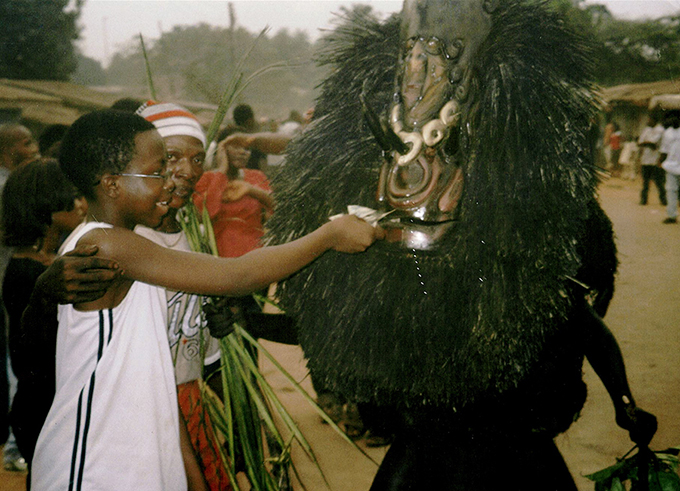
I took some of Northcote Thomas’s published photographs and manipulated them with gradient colours – colours that were quite sharp, like purple and a kind of neon red. These colours gave a lively theme to the photos, and also a pop art feel. In this way, I feel that the subjects are transported from being a ‘type’ into being a symbol of history – both colonial and indigenous… a kind of vision of the past.
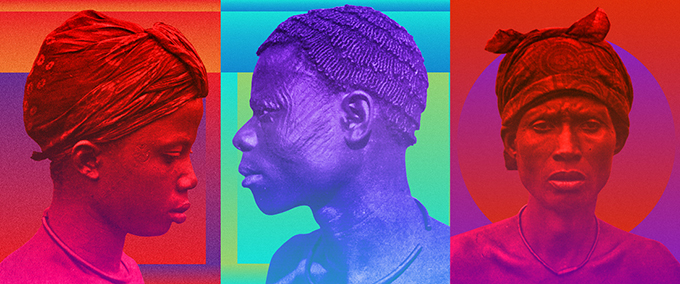
More recently I have been making paintings on paper, which bring out stronger themes. My use of black for fleshing out figures, not only draws out the focus on race, but also seems quite similar to Ekpo masks – these represent ghosts and ancestral spirits. The first of this type of painting I made was ‘Susu Boy’. When I first saw the photograph in Thomas’s Anthropological Report, it struck me as a kind of lonely looking study of the young man because of where he was positioned in the book. There is no name in the caption. The only information left for the viewer is the man’s features, particularly ones that are suggested to be racial, and also his skin colour. With so little information, I am led to imagine what might be happening ‘off camera’, in the margins. What happened just before the photo was taken? Or just after? What was the nature of the relationship between the man photographed and the photographer?
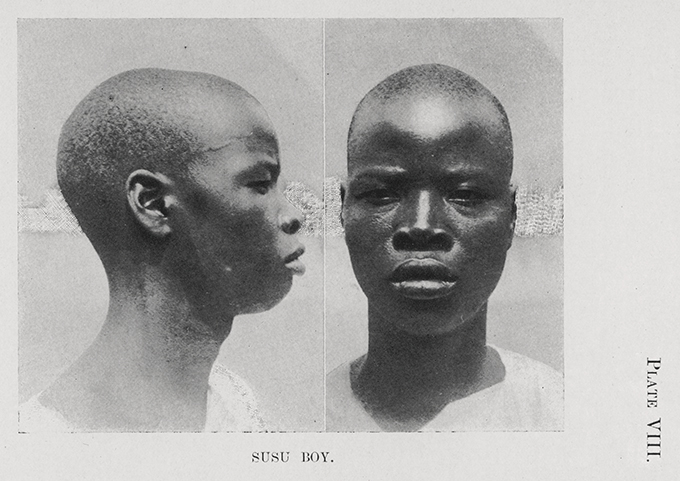
The arm of a white man holds the number board. Although no measure or number board may be found on the published photograph or negative, I wanted to draw attention to the ‘scientific’ presentation of the subject. The numbers, the measure, the presence of the hand with the board – these are used to frame the story and to raise questions pertaining to what was happening around the subject, both literally and figuratively considering the situation that this area of the world was in at the time. Most of this – and his – story will, for the most part, remain unknown. The jumbled numbers and bright colours give a sense of turmoil in the background – even if not literal turmoil, then one coming from the nature of the study of the subject and the way we see these images today in relation to what we know of the past.
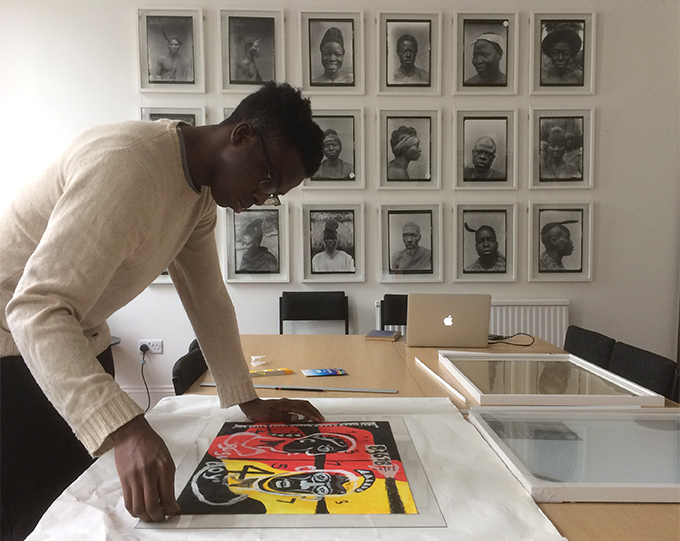
Chiadikōbi Nwaubani’s ‘Susu Boy’ is currently on display alongside N. W. Thomas’s photograph of Momo Samura as part of the Photographic Affordances exhibition at the Royal Anthropological Institute.
See an interview with Chiadikōbi Nwaubani at That Igbo Girl blog.